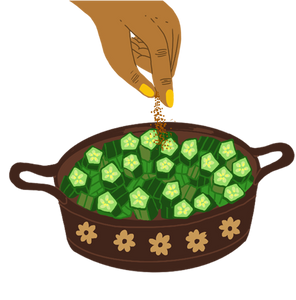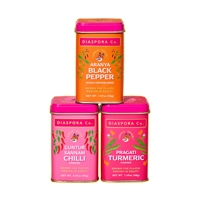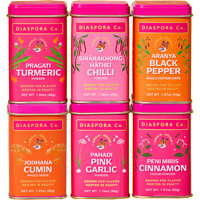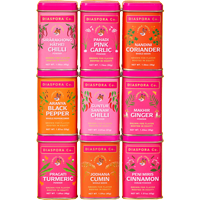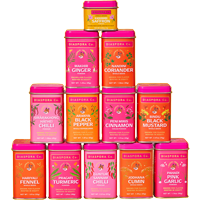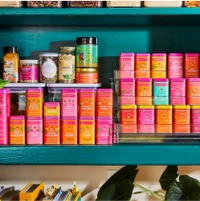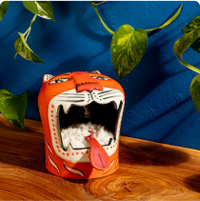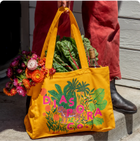I have to admit, I am not an avid fermenter. When developing this recipe, I knew I wanted to achieve a mouthwateringly funky, smoky, chilli-forward kimchi with a generous amount of heat, but not so much that it would overwhelm the beauty of the Napa cabbage. To help get me there, I went on a kimchi deep dive into both traditional and quick recipes across the internet (all my references are listed below) and learned from many kimchi experts all the tips and tricks to making kimchi at home with no more than a large bowl, a saucepan and a massive 2-quart jar. Now, I'll never be without homemade kimchi in my fridge — and, I couldn't be more delighted!
After testing several rounds of kimchi with our pre-ground chillies, I found that starting with whole chillies is the way to go. You can not only control the flavor profile and heat level, but can also grind them to a medium fine texture similar to Korean gochugaru, which is the classic main seasoning in this style of kimchi. This is where you can have fun with it. I love a base of Resham Patti chillies for their mild, red peppery-tomato-like flavor with a dose of Guntur Sannam for a little more heat, plus a generous amount of Sirārakhong Hāthei for more heat and intoxicating, smoky flavor and aroma. But, you can find your own perfect mix. Want a little more spice? Switch out the Guntur Sannam for whole Kashmiri chillies! Craving even more fire? Add in one Sivathei to the mix! Or, maybe you like it milder with a hint of smoke? Go for pretty much all Resham Patti with a little Sirārakhong Hāthei.
This kimchi recipe does not have fermented shrimp, dried anchovies, or fresh seafood in it. If you want that extra funk, I highly recommend Maangchi's recipe for Traditional Kimchi. Or, if you want to go the opposite direction and are looking for a vegan kimchi, Joanne Molinaro's My Favorite Kimchi recipe is my go-to. Both are linked below and would be bonkers delicious with the same ground Diaspora chilli mix from this recipe!
The great part about making kimchi is you can really eat it at any point in the fermentation process, but I love it the most after 2 to 3 days fermenting in a cool, dark place at room temperature and then about a week or two cold fermenting in the fridge. Though, my actual favorite moment of kimchi enjoyment is the last very funky bits of kimchi plus the juices made into a big, crispy-on-the-outside-a-little-custardy-on-the-inside kimchi pancake (though that happy bite is bittersweet because I know it is the end of my jar of kimchi!).
When developing this recipe, I referenced the following recipes and articles:
Serious Eats’ Baechu Kimchi (Napa Cabbage Kimchi) by Sunny Lee
The Korean Vegan’s My Favorite Kimchi by Joanne Molinaro
Traditional Kimchi by Maangchi
NYT Cooking’s Kimchi by Kelly Geary and Jessie Knadler, and adapted by Julia Moskin
Clean-Out-The-Fridge-Kimchi by Diana Yen
Seung Hee Lee’s “Kimchi easy” highlight on Instagram




